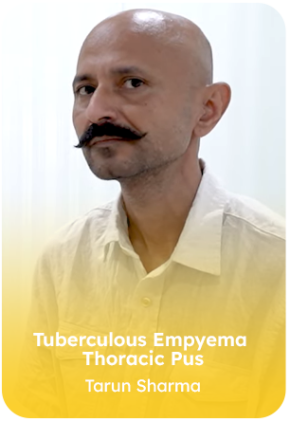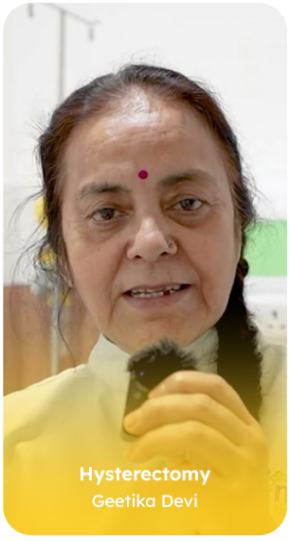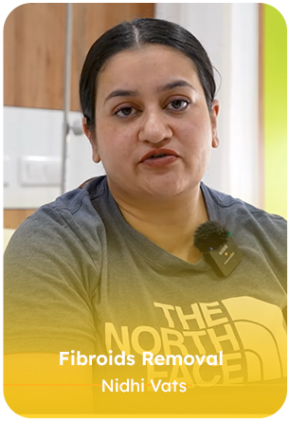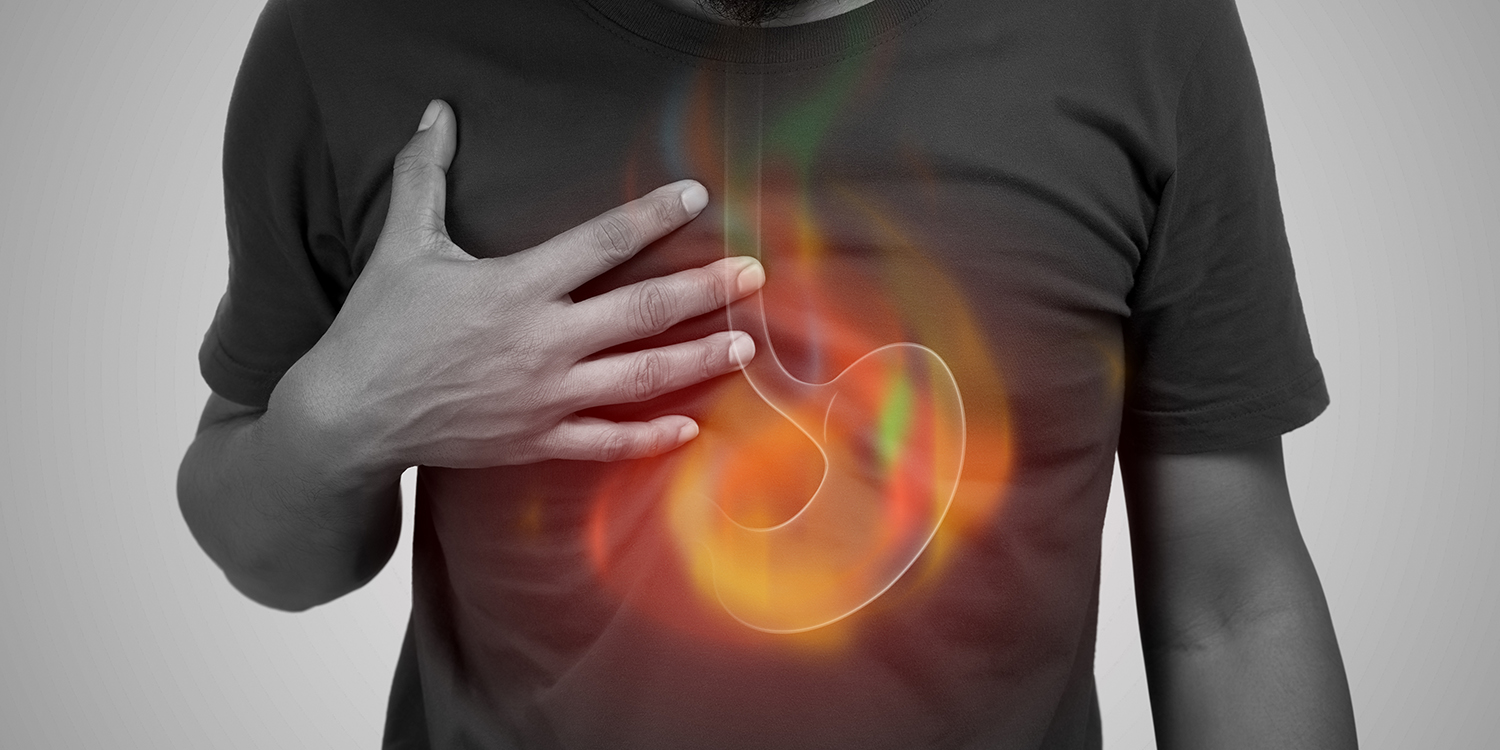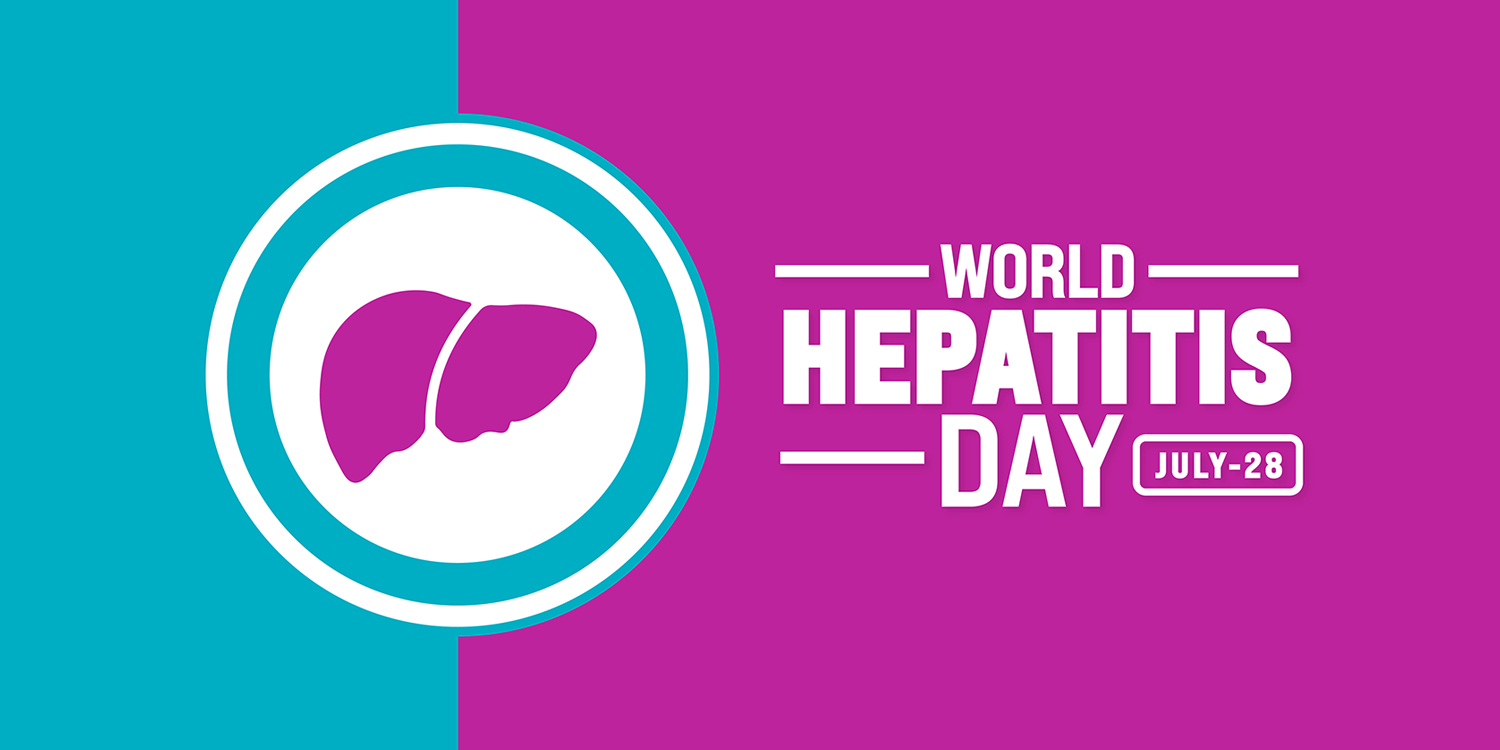What is Cholecystectomy?
Cholecystectomy is the surgical removal of the gallbladder. The gallbladder is a small organ located just below the liver. Its main role is to store bile, a fluid that helps digest fats. In some people, substances in the bile can harden and form gallstones. These stones may block the flow of bile or cause inflammation, leading to pain, nausea, or other complications.
Cholecystectomy is often recommended when gallstones cause repeated problems or when the gallbladder becomes infected or inflamed. It is one of the most commonly performed surgeries worldwide and is generally considered safe.
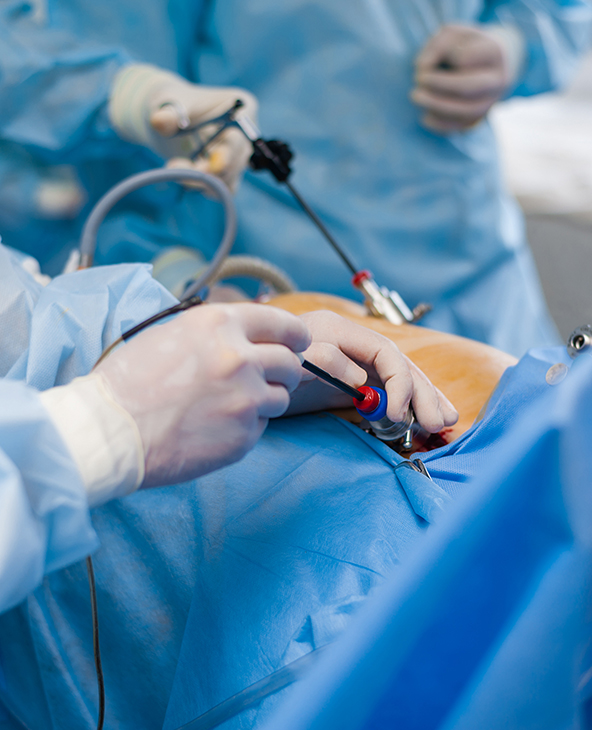
Types of Cholecystectomy Procedures
There are two main surgical methods used to remove the gallbladder: Laparoscopic/Minimally invasive and Open/ Conventional. While laparoscopic/minimally invasive surgery is the latest and gold standard method for gallbladder removal, in rare cases, open surgery may be required.
Laparoscopic Cholecystectomy
This is the most commonly performed method and is considered minimally invasive. During the procedure, the surgeon makes three to four small incisions in the abdomen. A thin tube with a camera (laparoscope) is inserted through one of the cuts, providing a clear view of the gallbladder on a screen. Special instruments are used through the other incisions to carefully detach and remove the gallbladder.
Advantages of laparoscopic cholecystectomy include:
- Smaller incisions, resulting in less postoperative pain
- Shorter hospital stay—most patients are discharged the same day or the next
- Faster recovery time, usually within 1 to 2 weeks
- Lower risk of wound-related complications such as bleeding, hernia formation
- Minimal scarring
This approach is suitable for most of the patients.
Open Cholecystectomy
Open surgery involves making a single, larger incision (usually about 10 to 15 cm) in the upper right side of the abdomen to access and remove the gallbladder.
Schedule Your Appointment with
Our Expert Doctors
We are dedicated to driving lasting, positive transformation in healthcare management through innovation and patient-centered solutions.
When Is Cholecystectomy Needed?
The most common reason is the formation of gallstones, which can interfere with the normal flow of bile. These stones may cause pain, infection, or inflammation, and in many cases, surgical removal of the gallbladder becomes the most effective treatment.
Gallstones with Symptoms
Gallstones often go unnoticed, but when they start causing pain—especially after meals—they can significantly affect daily life. The pain usually appears in the upper right or middle part of the abdomen and may last from a few minutes to several hours. Recurrent pain or digestive discomfort is a common reason doctors recommend surgery.
Cholecystitis (Gallbladder Inflammation)
When a gallstone blocks the gallbladder's outlet, it can lead to swelling and inflammation—a condition known as cholecystitis. This may result in sharp abdominal pain, fever, nausea, or tenderness when touched. If left untreated, it can lead to infection or even rupture of the gallbladder.
Stones in the Bile Duct (Choledocholithiasis)
Gallstones can sometimes travel into the bile ducts and cause blockages. This may lead to jaundice, severe pain, or a serious infection of the bile ducts called cholangitis. In such cases, gallbladder removal is often required after evaluation for stones in bile duct.
Gallstone Pancreatitis
If a gallstone blocks the pancreatic duct, it can cause inflammation of the pancreas. This condition, known as gallstone pancreatitis, is a medical emergency. After stabilisation, surgery is usually advised to prevent future episodes.
Gallbladder Polyps
Polyps are small growths on the inner lining of the gallbladder. Though usually harmless, larger polyps or those that show rapid growth may carry a risk of becoming cancerous. Surgery may be recommended as a precaution.
Biliary Dyskinesia
This condition occurs when the gallbladder does not empty properly, even in the absence of gallstones. It can cause symptoms similar to those of gallstone disease. If tests show poor gallbladder function, removal may be advised to relieve symptoms.
Gallbladder Cancer
Although rare, gallbladder cancer may be discovered during scans or during surgery for other issues. If cancer is confirmed, after staging, cholecystectomy is usually part of the treatment plan. In case of suspicion of or proven cancer adjacent liver and lymphnodes also need to be removed.
What to Expect Before the Surgery?
At Graphic Era Hospital, patients undergoing gallbladder removal receive personalised attention at every stage—from initial consultation to pre-surgery preparation. Our team works closely with each individual to ensure all evaluations are completed and instructions are clearly communicated.
Medical Evaluation and Tests
Before the procedure, doctors typically recommend a series of tests to assess your overall health and gather detailed information about your gallbladder. These may include:
- Blood tests
- Imaging scans such as ultrasound or MRI
- ECG or chest X-ray, depending on your age and health status
Your medical history and current medications are also reviewed carefully. If you’re on blood thinners or specific chronic medications for Diabetes Mellitus, Hypertension, etc adjustments may be required ahead of surgery.
Discussion with the Surgical Team
Your surgeon will explain the type of cholecystectomy planned and outline what the surgery involves. This includes the kind of anaesthesia used, the expected duration, and the recovery process. Any questions about the procedure, risks, or post-op care are addressed clearly.
At Graphic Era Hospital, this discussion is handled with care to ensure you're not only informed—but reassured.
Fasting and Medication Instructions
Fasting is usually required for 6–8 hours before surgery. You will also receive guidance about which medicines to continue or stop on the day of the procedure.
Final Preparation
Patients are typically admitted on the same day as surgery. Before the operation, our nursing team helps with basic preparation, such as cleaning the surgical area and checking vital signs, so everything is in place for a smooth experience.
What to Expect During the Surgery?
A cholecystectomy is often performed as a day-care surgery or with a short hospital stay. At Graphic Era Hospital, surgeries are performed in well-equipped operating theatres by experienced surgeons and anaesthesia teams. Patient safety, precision, and comfort remain the top priorities throughout the process.
Anaesthesia and Monitoring
Before the operation begins, you will be given general anaesthesia, which ensures you remain asleep and pain-free during the surgery. Once anaesthesia takes effect, a team of specialists will continuously monitor your heart rate, breathing, blood pressure, and oxygen levels throughout the procedure.
Type of Surgical Procedure
The surgeon will proceed with either laparoscopic or open cholecystectomy, depending on your case:
- Laparoscopic Cholecystectomy: This is the most commonly used method. The surgeon makes a few small cuts in the abdomen and inserts a camera (laparoscope) along with special surgical tools. The gallbladder is carefully removed through one of these incisions. This method usually results in less pain and a quicker recovery.
- Open Cholecystectomy: Though a rarity, in certain cases involving severe inflammation, scar tissue from previous surgeries, gallbladder cancer or unexpected complications due to gallstones, a larger incision may be required to safely remove the gallbladder. This approach involves a longer recovery time but is equally effective.
Duration and Immediate Care
The entire surgery typically lasts between 45 minutes to 1.5 hours. After the gallbladder is removed, the incisions are closed using stitches or surgical glue. You’ll then be moved to a recovery area where your vital signs will be monitored as the effects of anaesthesia wear off.
What to Expect After the Surgery?
Recovery after a cholecystectomy is generally straightforward, especially with proper guidance and care. Knowing what to expect can help you feel more at ease and better prepared for the days ahead.
At Graphic Era Hospital, post-surgery care focuses on safe recovery, timely monitoring, and patient comfort—whether your procedure is laparoscopic or open.
Immediate Recovery in the Hospital
After the surgery, you’ll be moved to a recovery room, where our medical team will monitor your vital signs until the effects of anaesthesia wear off. Most patients feel drowsy or mildly sore initially, which is completely normal. Pain relief and fluids are provided as needed.
Patients undergoing laparoscopic surgery may be discharged the same day or within 24 hours, depending on their condition. Those who have an open procedure may need to stay in the hospital for a couple of days for observation and additional support.
Managing Pain and Movement
Some discomfort or bloating is common in the first few days, especially near the incision sites. Pain medication is prescribed to manage this. You’ll also be encouraged to move around gently to promote circulation and reduce the risk of blood clots.
At Graphic Era Hospital, our care team provides clear instructions on safe movement, rest, and when you can resume light activities at home.
Diet and Wound Care
After surgery, you’ll start with a light, easily digestible diet and gradually return to your regular meals. Our doctors may suggest avoiding oily or heavy foods for a short period. You'll also receive instructions on how to care for the surgical wounds to prevent infection.
Follow-Up
A follow-up appointment will be scheduled to check your healing and remove stitches if needed. Most people return to normal activities within a week or two after laparoscopic surgery. Recovery from open surgery usually takes longer—about 4 to 6 weeks.
What are the Risks of Cholecystectomy?
Cholecystectomy is a commonly performed and generally safe surgery. However, like any surgical procedure, it carries a small risk of complications. Being aware of these risks helps in making informed choices and knowing when to seek help during recovery. At Graphic Era Hospital, patient safety is a top priority. Every step is taken to minimise risks through careful planning, skilled surgical techniques, and close postoperative monitoring.
Possible Risks Include:
- Infection: Although rare, infections can occur at the incision sites or internally. Symptoms may include redness, swelling, or discharge from the wound, and fever.
- Bleeding: Minor bleeding may occur during or after the procedure, but it is usually well controlled.
- Injury to Nearby Structures: In rare cases, nearby organs such as the bile duct, liver, or intestine may be affected during surgery. Our surgeons use precision-guided techniques to avoid such complications.
- Bile Leakage: Sometimes, bile may leak into the abdomen if there’s a small injury to the bile ducts. This may require further treatment.
- Blood Clots: As with any surgery, there’s a small risk of blood clots forming, especially if mobility is limited after the operation.
- Digestive Issues: Some patients may notice changes in digestion, such as loose stools or bloating, especially soon after surgery. These symptoms are usually temporary.
Why Choose Graphic Era Hospital for Cholecystectomy?

Consult Our Specialists
If you’ve been advised to undergo gallbladder removal surgery or are experiencing symptoms related to gallstones, don’t wait to seek expert care. With advanced facilities and a highly skilled medical team, we ensure the highest standards of care. Call us at 18008897351 or fill out our contact form to book a consultation with one of our skilled general and laparoscopic surgery specialists who are here to support you through every stage of care—from diagnosis and planning to surgery and recovery.
Patient Stories
Blog
Frequently Asked Questions (FAQs)
Can gallstones be treated without surgery?
In some cases, medication or dietary changes may temporarily relieve symptoms. However, these methods don’t remove the gallstones or prevent new ones from forming. If gallstones cause pain, infection, or other complications, surgery—specifically cholecystectomy—is often the most effective long-term solution.
How soon can I resume work or daily activities after the surgery?
Most patients who undergo laparoscopic cholecystectomy can return to light work and daily activities within a week. Full recovery might take up to two weeks. For open surgery, recovery time is longer. Your doctor at Graphic Era Hospital will provide a personalised recovery plan based on your health and the type of surgery performed.
Will gallbladder removal affect my digestion permanently?
The gallbladder helps store bile, but it’s not essential for digestion. After surgery, bile flows directly from the liver into the small intestine. Some patients may experience temporary changes in digestion, like loose stools or bloating, but these usually settle within a few weeks.
Do I need to make any long-term lifestyle changes after surgery?
In most cases, you can return to your regular routine. However, your doctor might recommend eating smaller, more frequent meals and reducing fatty or fried foods, especially in the weeks following surgery. At Graphic Era Hospital, our dietary team can help guide you through post-surgery adjustments.
Is cholecystectomy painful?
As with any surgery, there will be some discomfort, particularly in the first few days. Laparoscopic surgery typically involves less pain, smaller incisions, and quicker recovery. At Graphic Era Hospital, we use enhanced pain management protocols to keep you as comfortable as possible throughout your stay.
How do I know if I need surgery or not?
If you’re experiencing recurrent pain in the upper right abdomen, nausea after meals, or have been diagnosed with gallstones through an ultrasound, your doctor may recommend surgery. Our specialists at Graphic Era Hospital perform a detailed assessment, including imaging tests and symptom review, before suggesting the best course of treatment.
Are there any long-term risks of not removing the gallbladder when needed?
Yes. Leaving gallstones untreated may lead to complications such as gallbladder infections, inflammation, blockage of the bile ducts, or even pancreatitis. These can become medical emergencies and may require more complex interventions.
How can I prepare for my first surgical consultation at Graphic Era Hospital?
Bring along any test reports (like ultrasound or blood tests), a list of symptoms, your medical history, and details of current medications. During your consultation, our surgical team will explain the procedure, answer your concerns, and guide you through the next steps if surgery is advised.
